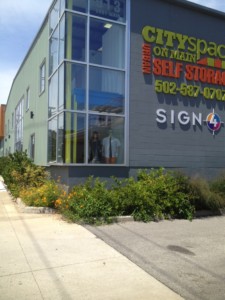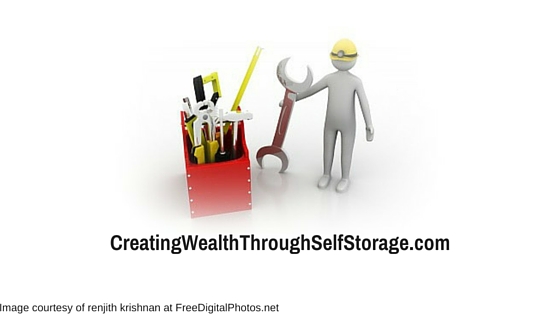Here’s one unusual way to minimize your risk when building your self storage business.
I realize it may seem like it goes against everything I say about why self storage is the best type of real estate project there is, but it’s something I’ve done and it has really helped under the right circumstances.
I’m talking about ‘Mixed Use” projects.
I’ve done it with two urban projects.
You can do it anywhere, but in my humble and sometimes flawed opinion, it works better in urban type settings.
The first mixed-use project we did was an urban warehouse re-development in a trendy section of the near downtown section of our market (about 1 million population in the MSA).
 I was working as a realtor for a friend of mine who owned a sign company to find him a building to buy. At the same time I had some partners asking me to find a space to do a self storage project near a condominium project we had been involved with.
I was working as a realtor for a friend of mine who owned a sign company to find him a building to buy. At the same time I had some partners asking me to find a space to do a self storage project near a condominium project we had been involved with.
When I saw this building on our commercial listing platform, I had just read an article in the ISS magazine about a mixed-use project and the building looked just like this one.
According to the news, the recession was over in early 2010 but it sure didn’t feel like it to me. I had gone 18 months without any commission income.
Thank goodness for self storage. It kept me going during the downturn.
I was gun shy to take on a 100% vacant self storage project in 2010. And then it clicked…..my friend could take part of the building. It was perfect for him – just too big. We could get two floors of self storage in it.
If he was a partner, when we filled up the self storage side he might have more incentive to move and allow us to finish the project as self storage because he would benefit as well.
Thank goodness he is a very entrepreneurial business owner, because he saw the beauty of self storage instantly.
It was a 42,000 square foot building and he needed 9,000 square feet. We carved that out and then designed, with the help of our storage system provider, the balance of the building as two story self storage.
What’s important to realize is that when we went to the bank it was still 2010. If you think getting a loan now is fun, it was blast back then.
However, we could show that we had $42,000 per year coming in before we leased our first self storage unit in the form of rent from my friend/partner’s company.
It made a huge difference. We developed the lower floor first, then the second floor. My partner is still there but getting ready to move to a new project a few miles away that we also purchased and developed as a mixed-use project. He’s even going to expand his size.
That project has two buildings. One is an interior, climate controlled, two story building with some indoor parking. The second building currently has a tenant warehousing their products. When their lease is up, my partner will make that his new home. We will then finish up the first project as self storage in the space he was using (assuming the updated feasibility report still shows demand).
As I write this I am sitting in a Miami hotel. Here, almost every self storage project is a multi-story, mixed-use project. The REITS usually put retail on the first floor (or most of it) along with the self storage office. The upper floors are the self storage.
For them it is a good way to create the income necessary to justify the high cost of the land.
If you are looking for a way to generate more income, this may be an avenue to explore.
The negatives of it are all the reasons I like self storage over other real estate investments:
- You sometimes have to pay a real estate commission.
- You (or someone) has tenant improvements to pay for.
- If your tenant goes out, you have all the traditional headaches every real estate owner faces.
But sometimes those headaches are worth it with the safety net a mixed-use project offers.
So as you are creating your business strategy, or searching for a plan B (the path every successful business owner has gone down many times in their careers), don’t forget the “Mixed-Use” strategy as a tool in your self storage toolkit.
Have you found other unconventional ways to reduce the risk in a new self storage project?



